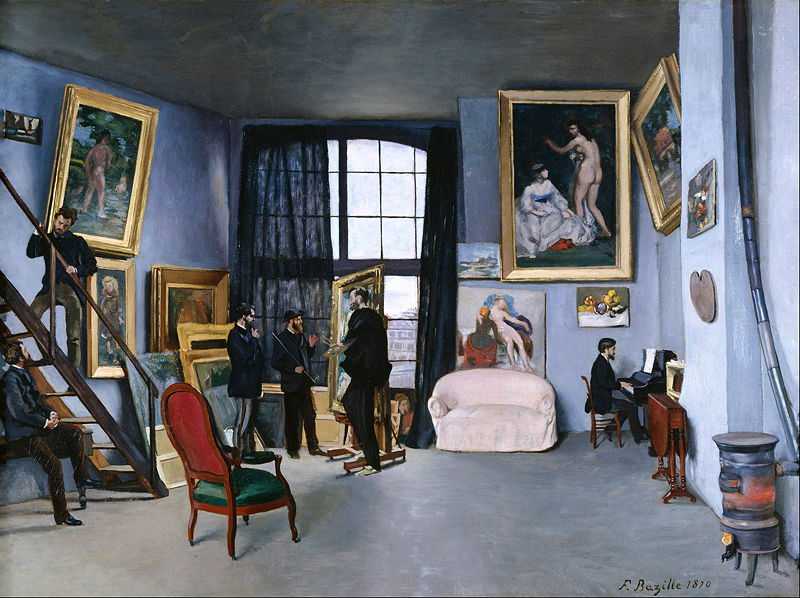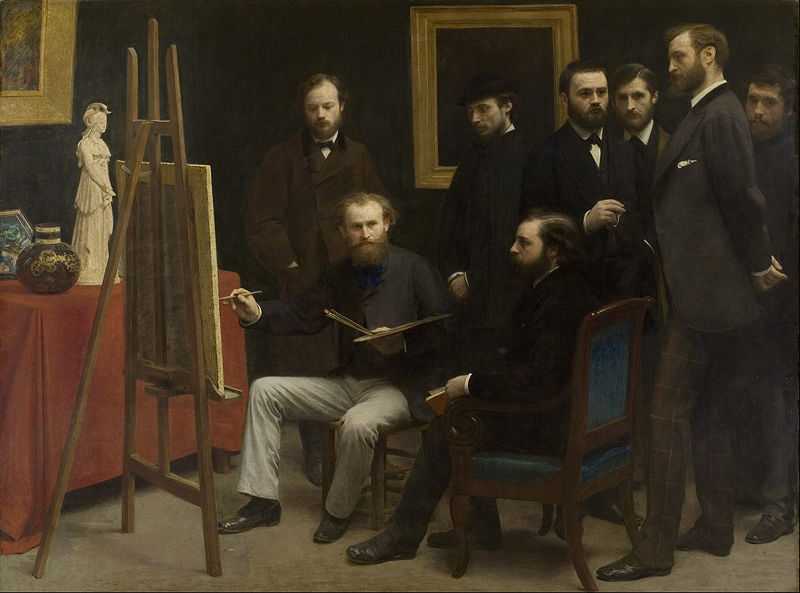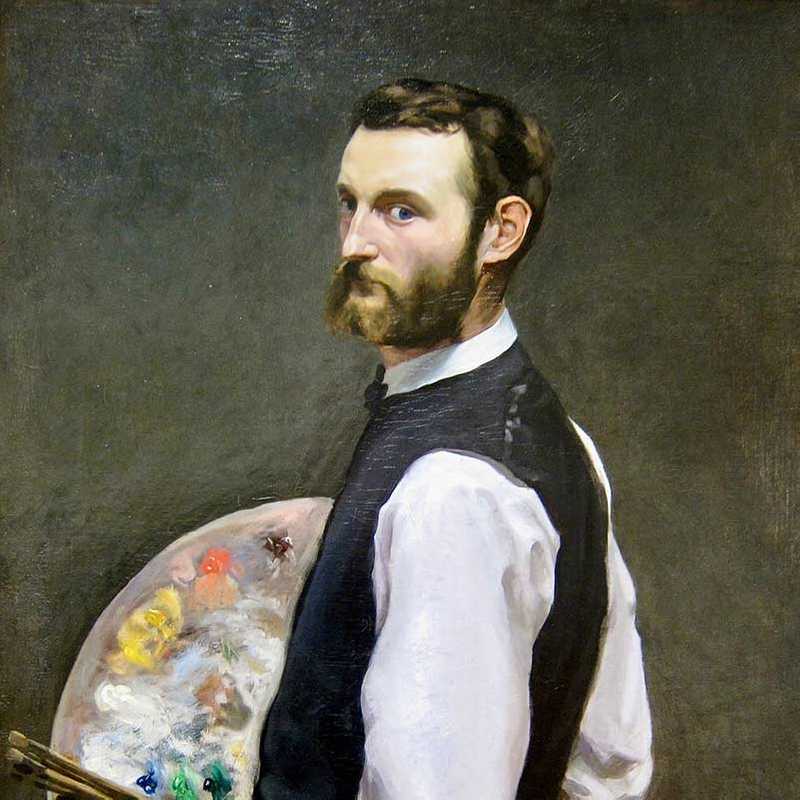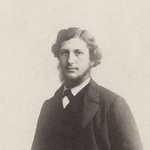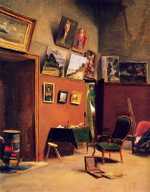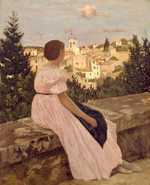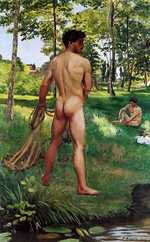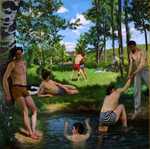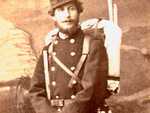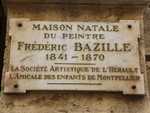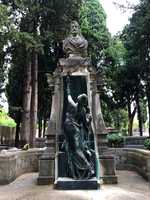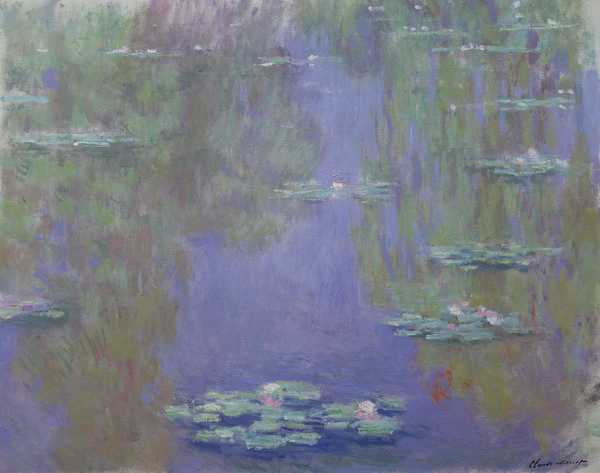1. Bazille’s early years
Records suggest that Bazille was determined to be a painter from a young age.
By 1859 he was studying drawing and painting at the Musée Fabre in Montpellier and taking drawing classes with a local sculptor.
He also had the opportunity to study the masterpieces of Eugene Delacroix and Gustave Courbet at a private museum, located in the Bruyas town house conveniently close to his family home.
The Bazille family
The Bazille family lived in the area of Méric in the South of France, where their ancestors had lived from as early as the 13th century. The legacy of the Bazille’s was craftsmanship, in particular goldsmithing and producing luxury goods, including weaponry. Goldsmithing was the trade that first made the family wealthy.
Frédéric’s father, Gaston, worked as a wine merchant and agronomist and was an important figure in the wine-producing circles of Languedoc.
His mother, Camille, was a talented pianist. Gaston expressed a desire that his son find a profession that would allow him to support himself, keeping his artistic interests solely as a hobby. As a result, young Frédéric obediently began pursuing a career in medicine.
Bazille moves to Paris
He moved to Paris in 1862 with the intention of studying medicine but at the same time he also enrolled as a painting student.
Whilst studying at the studio of Charles Gleyre, Bazille met Claude Monet, Auguste Renoir and Alfred Sisley.
The four students became close, sharing the belief that they should create artworks based on immediacy and everyday life rather than the statuesque and stale images favoured by the French art establishment.
Bazille the doctor?
In 1864, Bazille failed his medical exam and his father freed him from his obligation, agreeing to fund his painting career instead. By this time Bazille had a solid group of friends, including some of the greatest artistic and literary minds of the French avant-garde.
He began painting scenes inspired by ordinary subjects and became a key source of financial support for the other Impressionist artists, providing them with studio space and materials, as well as purchasing their work.
2. Bazille’s painting style
With this promising start to his artistic career, Bazille began painting prolifically between 1863 to 1870.
He established a studio in Paris, funded by his substantial allowance from his parents.
Shared Studios
His first was on the rue de Furstenberg, which he shared with Monet from 1864. He moved to his next studio in 1867, this time sharing with Renoir. Sisley and Monet often joined as well. The interplay and influence between these artists was vital for spurring the Impressionist movement and forming the base for what it would become.
Bazille admired Monet and Renoir’s paintings made ‘en plain air’ and Monet encouraged him to paint his own. He favoured the light in the South of France, where he was born and where his family still lived, and he visited home often, going back to paint.
The South of France
The setting had a strong effect on his works, particularly in the way in which he captured natural light. Thanks to this influence, many of Bazille’s works feature his family in fresh, bounteous summer settings where he uses colour in a generous, saturated palette. The light in many of his works is characterised by summer rays of sunshine and dappled shade.
Despite the group’s apparent rejection of conventional French art, Bazille went on to exhibit his work at the Paris Salon in 1866 and 1868.
Family Reunion
His painting,‘Family Reunion’, from 1867, was well received after several re-works of the original composition. When it was accepted, Bazille expressed his surprise, writing
"I don't know how, probably by mistake.”
The work was painted during a summer holiday at his family’s estate near Montpellier. Figures are arranged in the scene in a formal, frozen manner with the majority looking directly out of the canvas at the viewer. He included himself in the composition of ten family members, appearing on the far left hand side.
What makes this work stand out is Bazille’s use of colour. The contrast afforded by the bright sunlight and the shade of a leafy tree gives Bazille the freedom to play with bright shades of blues and green, whilst also adding depth to the dark accents of the sitters’ clothing.
Colour and Sunshine
It seemed that Bazille worked best in the South of France, staying there over the winter to produce the works he intended to submit to the Salon the following year. The well-known critic, Louis Edmond Duranty described in 1870 how
“Every spring Monsieur Bazille returns from the South with summer paintings […] full of greenery, sunshine and simple assurance”.
Generally Bazille is considered to have been an innovator in the early Impressionist style, learning from the artists around him more than from formal education. He sought to produce unique works and this is clear from the ambitious way in which he approached his subjects.
Bazille's Nudes
His nude paintings in particular set him apart from other artists, ’Fisherman with a Net’ from 1869 and ‘Bathers’ or ‘Summer Scene’ from 1869. Both works are set on the banks of the Lez River. The first was rejected by the Salon but the second was accepted.
Male nudes were uncommon in French art at the time and the way in which Bazille captured the male form in statuesque, romantic poses set them apart from other nude works.
Bathers
Indeed, the men in ‘Bathers’ hold poses that are typical of female nudes. Similarly, ‘Bathers’ was painted on a square canvas, bridging the gap between the classically horizontal landscape genre and the inverse portrait genre.
This work had a mixed reception at the Salon but it demonstrates Bazille’s rebellious and inventive edge, which is partly what makes him such an intriguing artist.
Furthermore, he experimented with a range of different subjects and compositions, including still life, flower portraits, landscapes and even history portraits. This flitting between genres is characteristic of his youth as he learned how to paint before he began to develop his own distinct style.
Unfortunately, the enthusiasm for Bazille’s work is somewhat muted as we are unable to see what would have followed.
3. Bazille’s legacy
The artistic legacy of Bazille was cut short by the Franco-Prussian war and his untimely death.
He enlisted in the army on 10th August 1870 and requested to join the 3rd Zouaves light infantry regiment.
Voluntary enlistment
Some art historians have suggested his decision was part of a wider personal crisis, prompted by his two unusual paintings ‘Landscape on the Banks of the Lez’ and ‘Ruth and Boaz’, depicting a scene from the Bible and a poem by Victor Hugo respectively. His friends expressed surprise and disappointment at his decision to enlist, evident in letters from the time.
Sadly, the young man was killed in fighting against the Prussian army on 28th November 1870. This was his first attack. His father travelled to the site of the battle, in Beaune-la-Rolande in the Val-de-Loir, to retrieve Frédéric’s body and take it home to the south.
Killed in battle
When he died, Bazille left behind the small number of paintings that he had been able to create during his short lifetime. At the end of Franco-Prussian war, the other Impressionists returned to Paris and resumed their work.
This was when the movement truly began to take off, culminating in the First Impressionist exhibition of 1874. Bazille’s work was not shown in the exhibition or any of the following eight Impressionist exhibitions. As a result of his death, his artistic legacy was never fully realised.
Bazille's legacy
From his early career, Bazille looks to have been set for a prominent position in the Impressionist movement had he lived. His works were praised by his contemporaries and critics of the day.
He balanced sensitive paintings of nature with experimentations with colour and figures, lending his artworks a majestic quality. The stylistic achievements of this young artist are limited to his earliest works, however, and we are left to wonder what might have been.

